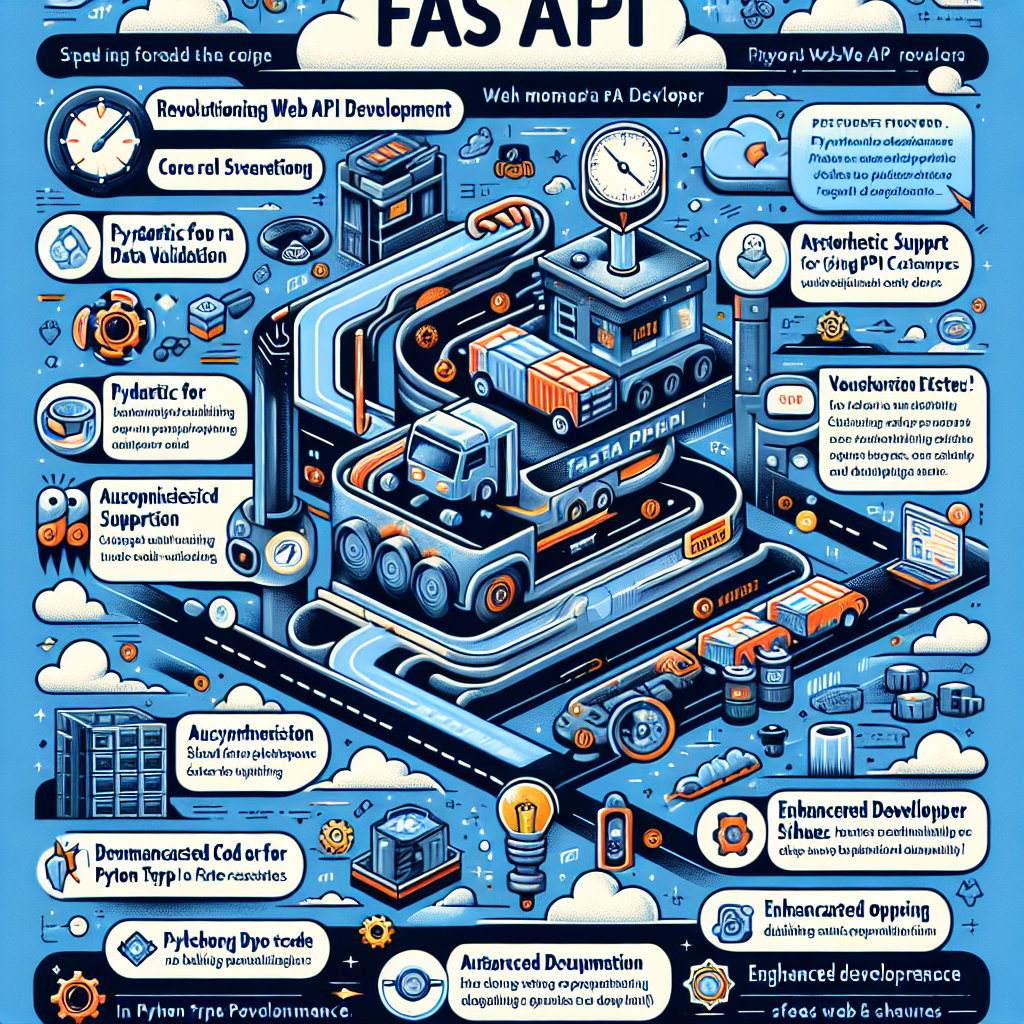Dive into the world of web development with FastAPI, a high-performance Python framework, the role of web frameworks in app creation, and the efficiency of asynchronous programming.

 Conclusions
FastAPI and asynchronous programming are pivotal in modern web development. They drive the creation of responsive and high-performance web applications, while web frameworks streamline development with their reusable components.
Conclusions
FastAPI and asynchronous programming are pivotal in modern web development. They drive the creation of responsive and high-performance web applications, while web frameworks streamline development with their reusable components.
FastAPI: The Future of Web APIs in Python
Revolutionizing Web API Development
FastAPI has emerged as a dynamic force in the landscape of web development, particularly in the realm of API creation using Python. Its core emphasis on speed and user-friendliness without compromising on efficiency has set a new standard. What sets FastAPI apart is its inherent support for asynchronous programming and robust data validation through Pydantic, facilitating an enhanced development experience that caters to modern web applications' demands.Pydantic for Data Validation
A cornerstone of FastAPI's functionality is its integration with Pydantic. This tool is crucial for defining data schemas and performing advanced data validation, serialization, and documentation, which are vital in modern web API development. Pydantic's use of Python type hints ensures that data is not only accurately typed but also automatically validated, reducing a significant amount of boilerplate code and potential errors, thus streamlining the development process.Asynchronous Support with Starlette
At the heart of FastAPI's capability to handle concurrent requests with efficiency lies its asynchronous programming model, significantly powered by Starlette. This feature enables FastAPI to manage thousands of requests simultaneously without slowing down, making it an ideal choice for high-traffic applications. By supporting asynchronous request handlers, FastAPI allows developers to write non-blocking code that can perform multiple operations in parallel, drastically improving performance.Automatic OpenAPI Documentation
One of FastAPI's most lauded features is its automatic generation of OpenAPI documentation. This functionality not only aids in maintaining clear and up-to-date documentation for APIs but also simplifies the process of API testing and collaboration among developers. With the auto-generated interactive API documentation, developers can quickly test endpoints, ensuring that APIs are more reliable and easier to use.Enhanced Developer Experience
Since its introduction in 2018, FastAPI has profoundly impacted the web development community, advocating for a shift towards more efficient and performance-oriented frameworks. The embrace of Python type hints marks a significant leap toward optimizing developer experience, allowing for cleaner code, better error handling, and faster debugging. This adherence to typing not only enhances code quality but also facilitates a more seamless integration with modern development tools and practices.FastAPI represents a blend of speed, ease of use, and functionality, making it a compelling choice for developers looking to build modern, high-performing web APIs in Python. Its emphasis on asynchronous programming, automatic documentation, and robust data validation positions FastAPI as a forward-thinking framework that resonates with current and future web development trends.
Asynchronous Programming: Maximizing Efficiency
Understanding Asynchronous Programming
In the landscape of computer programming, asynchronous programming is a paradigm that significantly diverges from traditional synchronous programming. It allows the execution of tasks in a non-blocking manner, letting programs perform other tasks while awaiting the completion of I/O operations, such as reading a file or fetching data over the network. This approach is advantageous for developing scalable and efficient web applications, as it optimizes the use of system resources, enhancing performance and responsiveness.Asynchronous Programming in Web Development
Web development greatly benefits from asynchronous programming, especially in handling numerous concurrent requests and long-running I/O tasks. This is crucial in building responsive and high-performing web applications. By adopting an asynchronous approach, web servers can manage requests without spawning new threads for each, significantly reducing overhead and improving scalability.Futures and Promises
As the building blocks of asynchronous programming, futures and promises represent placeholders for the results of operations that are yet to be completed. They allow developers to attach callbacks that will execute once the operation finishes, enabling the continuation of task execution without blocking. This method facilitates writing cleaner and more maintainable code, as it abstracts away the complexities of thread management and synchronization.Asynchronous Programming in FastAPI
FastAPI, a modern web framework for building APIs with Python 3.7+, is designed to be fast and easy to use. It leverages asynchronous programming principles to handle large volumes of requests efficiently. By supporting asynchronous request handlers, FastAPI allows developers to incorporate asynchronous functions directly into their web applications, making it an ideal choice for high-performance web services.Performance Implications
Employing asynchronous programming with FastAPI or similar web frameworks leads to significant performance improvements. It reduces latency and increases the throughput of applications by efficiently utilizing available system resources. This is particularly beneficial for I/O-bound and high-latency services, where traditional synchronous programming techniques would lead to poor utilization of resources and degraded user experiences.The Future of Asynchronous Programming
Asynchronous programming is not without its challenges, particularly regarding complexity and error handling. However, its advantages in building scalable and efficient applications are undeniable. With continuous improvements in programming languages and frameworks, the adoption of asynchronous programming is expected to grow, further enhancing the capabilities of web applications. As developers become more familiar with its paradigms and patterns, asynchronous programming will continue to shape the future of web development, pushing the boundaries of what is possible with web technologies. Conclusions
FastAPI and asynchronous programming are pivotal in modern web development. They drive the creation of responsive and high-performance web applications, while web frameworks streamline development with their reusable components.
Conclusions
FastAPI and asynchronous programming are pivotal in modern web development. They drive the creation of responsive and high-performance web applications, while web frameworks streamline development with their reusable components. 